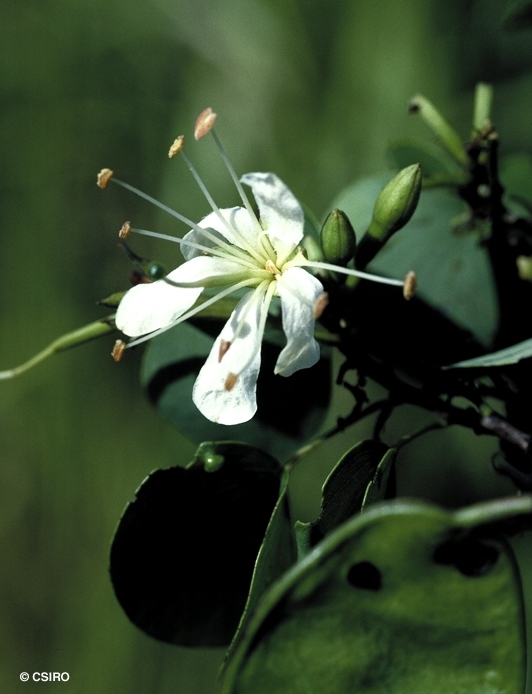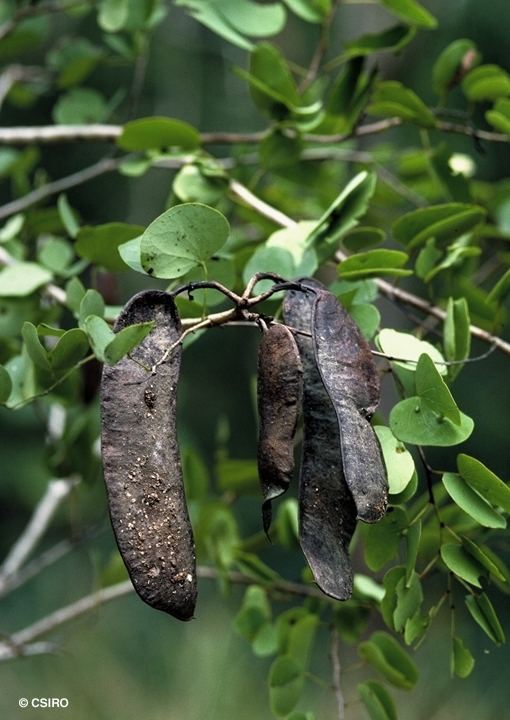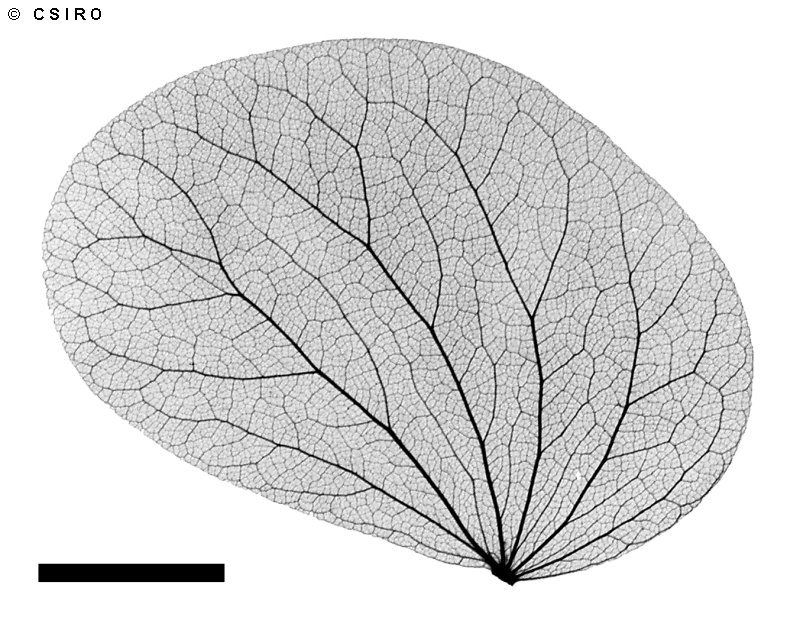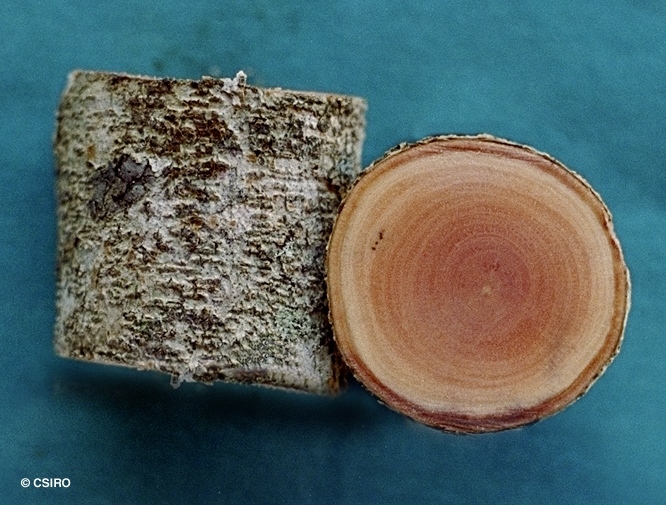Australian Tropical Rainforest Plants - Online edition
Bauhinia binata Blanco







Blanco, F.M. (1837) Fl. Filip. : 331. Type: E. D. Merrill, Sp. Blancoanae 998; neo: L; isoneo: NSW, K, W.
Climbing Bauhinia
Vine stem diameters to 6 cm recorded. Grows into a large vine but also flowers and fruits as a shrub.
Compound leaves resemble butterflies, each leaf consisting of two leaflets and a terminal club-like gland about 2 mm long. Leaflet blades about 18-45 x 12-35 mm with 3-5 veins radiating from the base, leaflet stalks absent. Compound leaf petiole about 10-18 mm long. Stipules small, less than 1 mm long, caducous. Tendrils usually present on some twigs or branches.
Pods flat or slightly inflated, curved, about 10-20 x 2-3 cm. Seeds about 6-13, hard, flat, patelliform, about 8-10 mm diam. Cotyledons flat, about 9 x 8 mm, much longer than the 1 mm long radicle.
Cotyledons obovate, about 12-18 x 8-12 mm, fleshy, sessile. First pair of leaves pinnate with one pair of asymmetrical leaflets and a spur-like pendulous gland about 2-3 mm long attached between the leaflets. At the tenth leaf stage: leaves compound, leaflets +/- semi-orbicular, sessile, in pairs with a downward pointing gland or gland-like structure attached to the petiole between the leaflet pairs. Leaflet venation consists of three or four veins radiating from the base. Stipules broadly triangular, about 1 mm long. Seed germination time 14 to 126 days.
This species is of no grazing significance. Hacker (1990).





